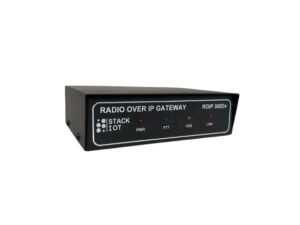In the digital transformation time, communication technologies are developing at a fast pace. Radio over IP (ROIP) is one of the most influential inventions in critical communications. This system integrates the effectiveness of the conventional 2 way radio communication with the scalability of the advanced IP networks. In this way, it will help close the divide between the old systems and new high-tech digital communication systems.
We will dissect the functionality of ROIP in this blog, the stepwise functionality of the conversion of radio signals into IP-based communication, and the reason why industries are progressively depending on it.
What is ROIP?
ROIP or Radio over internet protocol is a process of sending two way radio communications via IP networks (LAN, WAN or the internet). It is usually contrasted to VoIP (Voice over Internet Protocol) when VoIP is mainly applied in telephony, ROIP involves the integration of radio communications in IP networks.
Using ROIP, organizations do not need to have a traditional radio coverage because they can have several radios, repeaters, and dispatch systems spread over wide geographical locations.
How ROIP Works: Step by Step
ROIP communication process includes a number of technical steps. This is the way radio signals are translated and sent across the IP:
1. Radio Signal Input
- A customer sends sound through a two-way radio.
- The radio transforms the voice of the user into an analog signal.
2. ROIP Gateway Conversion
- The radio signal is an analog signal which is attached to a ROIP gateway.
- The gateway converts the signal (through codecs) into IP packets.
3. Transmission over IP Network.
- These packets are transmitted across an IP network (LAN or WAN or the internet).
- Normal networking protocols guarantee information integrity and real-time provision.
4. Reception and Decoding
- The IP packets are received by another ROIP gateway.
- The packets are again translated into audio signals.
- The sound is sent out via a radio or dispatch console connected to it.
5.Two-Way Communication
- The same process repeats for return communication, creating a seamless two-way system.
Simplified Workflow Table:
| Step | Function | Technology Involved |
| Signal Input | Voice to analog signal | Radio transmitter |
| Digitization | Analog to digital conversion | ROIP gateway + codecs |
| IP Transmission | Data encapsulation & routing | IP network (LAN/WAN/Internet) |
| Decoding | IP packets back to audio | ROIP gateway |
| Output | Audio to receiving radio or console | Radio receiver |
Key Benefits of ROIP
ROIP systems have several benefits compared to the conventional radio networks:
- Extended Coverage- It is no longer restricted by the range of radio towers; IP can be used to communicate with other cities or even other countries.
- Interoperability -Integrates radios of various brands and frequencies.
- Scalability- Can be easily scaled using new gateways and radios.
- Cost-Efficiency -Eliminates reliance on expensive leased lines or satellite connections.
- Remote Access – Dispatchers are able to access it anywhere as long as they have access to the internet.
Applications of ROIP
ROIP finds more and more applications in industries that need good, real-time communication:
- Public Safety and Emergency Services – Police, fire, and other medical units extend communications with the help of ROIP in the course of critical operations.
- Transportation & Logistics- This allows coordination between fleets and remote locations.
- Oil and Gas / Mining: This is used in remote locations, to have workers connected to the centralized control centre.
- Military & Defense – Secure and scalable to mission critical communicating.
- Utilities and Manufacturing- Provides smooth communication of field and plant teams.
ROIP vs Traditional Radio Systems
| Feature | Traditional Radio | ROIP Communication |
| Coverage Range | Limited to tower/radio range | Global via IP networks |
| Scalability | Difficult, hardware-limited | Easily expandable via gateways |
| Interoperability | Often brand/frequency locked | Connects different systems easily |
| Infrastructure Cost | High (towers, lines) | Lower (uses existing IP networks) |
| Remote Operation | Limited | Possible from anywhere with internet |
Conclusion
The development of communication technologies has changed Radio over IP (ROIP) into a game-changer in the sphere of industry that demands the use of critical and real-time connectivity. ROIP communication systems have the benefit of converting analog radio signal into IP packets thus increasing the range, enhancing interoperability, and decreasing cost. The use of ROIP is guaranteeing stable and future conscious communication networks in areas such as the general safety of the population to the workings of the industry.
In case your organization is considering the possibility of developing further communication options, StackIOT offers IoT-based integration and ROIP implementation services to ensure that you remain connected at any time and location.




